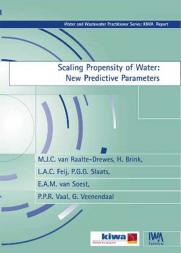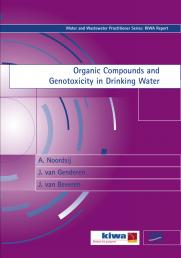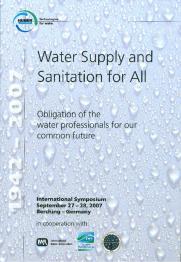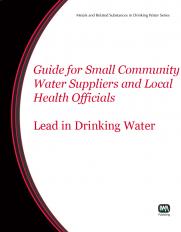Reduction of Sludge Production in Wastewater Treatment Plants
The volume of sludge produced in a WWTP is only about 1% (dewatered sludge is 0.5‰) of the volume of influent wastewater to be treated. To manage WWTPs effectively and efficiently, it is absolutely necessary to extract waste sludge, including inert solids and excess biomass, in order to prevent their accumulation within the system.
Sludge Drying Overview - Treatment Methods and Applications
Sludge is a residual, semi-solid by-product left from industrial or refining processes. It is a separated solid suspended in a liquid, typically containing major quantities of interstitial water between its solid particles. This material can be dried to cut its volume and reduce most of the moisture content of the biosolids present in the sludge.
Helminth eggs
Helminth eggs are the infective agents for the types of worm diseases known globally as helminthiases. Although helminths are pluricellular animals their eggs are microscopic (around 20 to 80 μm for those that are important in the sanitary field) and are contained in variable amounts in wastewater, sludge and excreta. Helminth eggs infect humans through: (1) the ingestion of food crops polluted with wastewater sludge or excreta, (2) direct contact with polluted sludge or faecal material, and (3) the ingestion of polluted meat or fish.
Removal Technologies in Wastewater Treatment
Since heavy metal ions are non-biodegradable, they can accumulate their amounts along the food chain. Therefore, it is critical necessary to remove or minimize the heavy metal ions in wastewater systematically. In this article, we mainly introduce three commonly used methods for heavy metal elimination: chemical precipitation, ion exchange, and adsorption.
Distillation Treatment and Removal of Contaminants from Drinking Water
Distillation treatment typically removes most of the dissolved materials. In addition, the boiling process kills biological contaminants. Nevertheless, there are certain volatile and semi-volatile organic compounds that may not be removed by distillation (CDPH 2009). Organic compounds that boil at temperatures greater than the boiling point of water (some pesticides) can be effectively removed from the water (MSUE 2003). Organic compounds that boil at temperatures lower than the boiling point of water (ex., benzene and toluene) will be vaporized along with the water. If these harmful compounds are not removed prior to condensation, they will remain in the purified product (MSUE 2003).
Arsenic Contamination In Groundwater In Bangladesh: An Environmental And Social Disaster
Before 1971 (Year of independence from Pakisthan), thousand of people died each year due to water born diseases in Bangladesh. To provide safe water, with help of UNECEF, the Government of Bangladesh (GoB) installed millions of tubewell which ensured safe drinking water to 97% population of Bangladesh. When the people are habituated with tubewell water, then in 1993, the people of Bangladesh discover the silent killer, the Arsenic. It becomes a challenge to an excellent public health success story. This paper has reviewed environmental and social implication of Arsenic in Bangladesh
 Scaling Propensity of Water: New Predictive Parameters
Scaling Propensity of Water: New Predictive Parameters
ISBN: 9781843390473
eISBN: 9781780402567
The commonly used Saturation Index calculated at 10ºC (SI10) is not suitable for practical situations. New parameters have been: TPCC90 (Theoretically Precipitable Calcium Carbonate at 90ºC)developed for simple and rapid analysis of calcium carbonate precipitation (scaling) phenomena which occur during the heating of drinking water; SI90 (Saturation Index at 90ºC); NI (Nucleation Index); PPCC (Practically Precipitable Calcium Carbonate). Both TPCC90 and SI90 describe the hydrodynamic driven force for the scaling reaction. The nucleation index indicates at what rate calcium carbonate precipitation is accelerated by nuclei present in the water. Finally, the PPCC is a measurement under practical conditions, determining the rate of scaling. The suitability of these parameters for predicting scaling was assessed and detailed results are presented in this publication.
 Organic Compounds and Genotoxicity in Drinking Water
Organic Compounds and Genotoxicity in Drinking Water
ISBN: 9781843390480
eISBN: 9781780402598
Until recently only lipophilic compounds were analysed in any research on the occurrence of mutanogenic and carcinogenic compounds in water. They were isolated using XAD-resins. They contain approximately half of the total organic material present in water. A clear mutanogenic effect was demonstrated for these compounds using Amestest. The hydrophilic fraction of the organic material was difficult to investigate because of problems with isolation and analysis caused by its high solubility. The high solubility means in practice that the hydrophilic compounds are mobile in conventional treatment systems and in soil and can easily penetrate into drinking water. A method was developed to isolate hydrophilic compounds using a combination of ion exchange and a clean-up with a XAD-resin. The isolated compounds were examined with the Amestest for the presence of mutanogenic compounds. For some tested water types a mutanogenic effect was found in the lipophilic material. Due to oxidation with ozone, mutanogenic compounds can be formed from (non-mutanogenic) industrial pollutions. No mutanogenic activity was found in the hydrophilic organic material of all examined water types, even after ozone oxidation or chlorination. It was hypothesized that hydrophilic compounds can not reach the DNA of the cell, thus they do not play any (geno) toxicological role.
 Water Supply and Sanitation for All
Water Supply and Sanitation for All
ISBN: 9781843395140
eISBN: 9781780409986
The supply of healthy drinking water and disposal of our wastewater is a central problem. Solving this problem is one of the claims of the UN Millennium Development Goals, and consequently an obligation for all those involved with water to join efforts in finding solutions. Climate change, population growth, migration and urban sprawl are factors forcing us to reconsider the traditional approach to urban water management. The water supply and sanitation infrastructure currently in use worldwide was developed in and for countries which are relatively wealthy, and which have access to plenty of water. Is it really wise to build the same kind of infrastructure and to apply the same methods and processes in regions with different climatic, ecological and economical conditions? Should we maintain our flush and discharge sanitation concepts while freshwater is becoming a limited resource? Aren't there smarter more environmentally sound methods to use and safegaurd our precious water resources? Are water authorities, city planners, architects, regulators and politicians ready to accept innovative solutions deviating from those described in textbooks? Questions like these were raised during the International Symposium Water Supply and Sanitation for All held in Berching, Germany from September 27 - 28, 2007. This book collects the papers presented at this conference.
 Guide for Small Community Water Suppliers and Local Health Officials on Lead in Drinking Water
Guide for Small Community Water Suppliers and Local Health Officials on Lead in Drinking Water
ISBN: 9781843393801
This Guide for Small Community Water Suppliers and Local Health Officials is one of a series produced by the International Water Association's (IWA) Specialist Group on Metals and Related Substances in Drinking Water. It is an abbreviated compilation of the wide range of scientific, engineering, health and operational issues concerned with the control of lead in drinking water in small water supply systems.
The IWA Specialist Group is supported by members from 26 European countries, Canada and the United States. It is an active research network and has regularly convened international conferences and seminars. It has close working links with the World Health Organization, the European Commission's Joint Research Centre, Health Canada and the US Environmental Protection Agency. The IWA Specialist Group developed out of COST Action 637 (www.cost.esf.org), a European research network. The Guide is supported by a two-day technical training course and a more comprehensive Best Practice Guide on the Control of Lead in Drinking Water (IWA, 2010). Information about training, the Best Practice Guide and the research network in general is available from www.meteau.org. This Guide for Small Community Water Suppliers and Local Health Officials explains why lead in drinking water may still be a threat to public health in small communities. It is aimed at Local Health Officials and the operators of drinking water supply systems that serve small communities. Its objectives are to raise awareness, to provide a basis for assessing the extent of problems, and to identify control options.